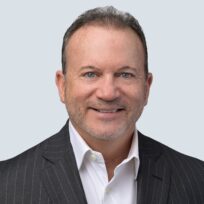Whether fighting a fire or dealing with difficult business situations, it is critical to have the right people on your side. Experience, know-how and a willingness to work through the challenges are key to achieving successful outcomes. As the property & casualty insurance market shifts to a hard market, insurance buyers should understand the new insurance playing field and critically evaluate their brokerage relationship to be certain that they have the right partner.
Simply stated, a hard insurance market is defined by continued high demand for insurance coverage with limited or reduced supply. The causes for the limited or reduced supply are manifold, but the net result is an upset from the status quo with insurance carriers focused on increasing rates, restricting coverage terms and conditions and possibly raising deductibles and retentions for the insured. Typically, underwriting authority is transitioned to the management level, competition among carriers is limited as insurance companies retrench on their existing business and insurance buyers find it more difficult to secure coverage at what they feel is a reasonable price.
Many related factors are driving the underwriting stringency in today’s property and casualty insurance market. Low interest rates in the bond market are weakening carriers’ investment returns, adding pressure to achieve underwriting profitability. Many carriers are pointing at a phenomenon called social inflation, which has led to increased litigation, plaintiff-friendly legal decisions and larger jury awards, all of which adversely impact underwriting performance. Finally, recent catastrophic events that resulted in massive insured losses, such as hurricanes Maria, Irma and Harvey, floods and California wildfires, collectively have lingering effects on insurance carriers’ balance sheets.
This hardening insurance market requires a more deliberate and detailed approach to securing coverage. Insurance brokers with a deep knowledge of the market and close carrier relationships are best suited to help navigate the process. Below are a few best practices in working with a broker to ensure the best outcome in today’s hardening market:
In a hard market, underwriters ask more questions, require more detailed information and spend more time reviewing submissions. Many carriers require the additional steps of performing their own risk control inspections and, often, in-person customer meetings. Given these additional requests for information and potential delays in coordinating customer underwriting meetings, insurance buyers are wise to begin gathering renewal data and reviewing prior insurance claims as early as is practicable.
Companies should also spend time analyzing and strengthening the efficacy of their risk control and safety programs, as well as identifying and addressing the key risk factors facing their business. Demonstrating robust safety protocols that differentiate the company from competitors will help the submission gain traction with the carrier. Now is also the time to analyze historical claims performance data and other underwriting information and develop the most effective way to communicate those results.
Establishing open communication between insured, broker and carrier is crucial to securing optimal coverage in a hardening market. In order for the broker to represent the company accurately in the market, they must fully understand the company’s potential exposures, safety protocols and overall risk profile. This requires transparent conversations between the parties throughout the submission process.
An insured and their broker should collaborate closely in securing coverage. Typically, it is the insured’s responsibility to articulate their needs and exposures, while it’s the broker’s responsibility to discuss strategy and communicate with the carrier. However, as the hardening market drives more in-person sit downs between carriers and insureds, companies are increasingly required to tell their own story. These meetings are a good way for insureds to differentiate themselves, add a personal touch and demonstrate their engagement.
Brokers can help insureds develop a final submission package that meets the onerous requirements of a hard market and stands out among the rest. Insureds should include every piece of information that could be of use to the carrier. In any absence of information, insurance underwriters sometimes assume the worst. Robust submissions take the guess work out of the equation and make underwriters’ jobs easier.
At Conner Strong & Buckelew, we emphasize first-class submissions because they create an impression on the underwriters and often establish a clear path from submission to coverage. Many insurance brokers shy away from the challenges that come with a hardening market. But a true business advocate will do everything in their power to understand the details of their customer and put forth the effort to create a comprehensive submission that secures the broadest insurance coverage possible at the most competitive rates in order to protect the insured’s bottom line.
When prices rise, insureds have an opportunity to evaluate new program structures and alternatives to traditional coverage such as self-insurance or captives. Brokers with relationships across the insurance industry can help companies get creative by engaging other carriers and investigating unique solutions that may not have been previously considered.
Conner Strong & Buckelew’s account management and in-house captives teams provide our clients with an edge in hard markets. In a captive, insureds create their own insurance companies, reducing their reliance on traditional insurance carriers. This approach can shield companies from market fluctuation and provide a level of independence in creating customized insurance programs to meet their risk financing needs. While not a solution for every company, captives can provide organizations with a number of benefits:
Brokers with a thorough understanding of the market and the intricacies of captives can help companies evaluate this option.
A Broker’s Added Value
In hard markets, the true value of an experienced insurance broker is revealed. Clearly it is important to work with the right broker to assist with the placement of coverage, but insureds should also look to partner with a broker that can offer services the insurance carriers might cut back on during difficult times. As insurance carriers focus on underwriting profits, their focus might shift away from risk control and safety services designed to mitigate risk, and claims handling may suffer if adjusters become inundated with claim files. Brokers like Conner Strong & Buckelew can pick up this slack by providing access to our own in-house risk and safety professionals and help insureds navigate the claims processes for any losses that do arise.
Hard markets present many challenges for businesses from increasing insurance costs to potential restrictions in coverage terms. The current COVID-19 outbreak places even more pressure on companies to make sure they are protected. To achieve the best outcome for your business, it is critical that companies have an experienced broker partner with the knowledge and resources available to do the necessary work on your behalf. A broker with strong market relationships and a creative strategy will go a long way to alleviate much of the strain associated with the uncertainty of the hard market.
Click here for a printable download.

Senior Partner, National Accounts, New York Region Practice Leader
Led the firm’s International Practice Group and the Property & Casualty Training Committee

Partner, Senior Business Development Executive
